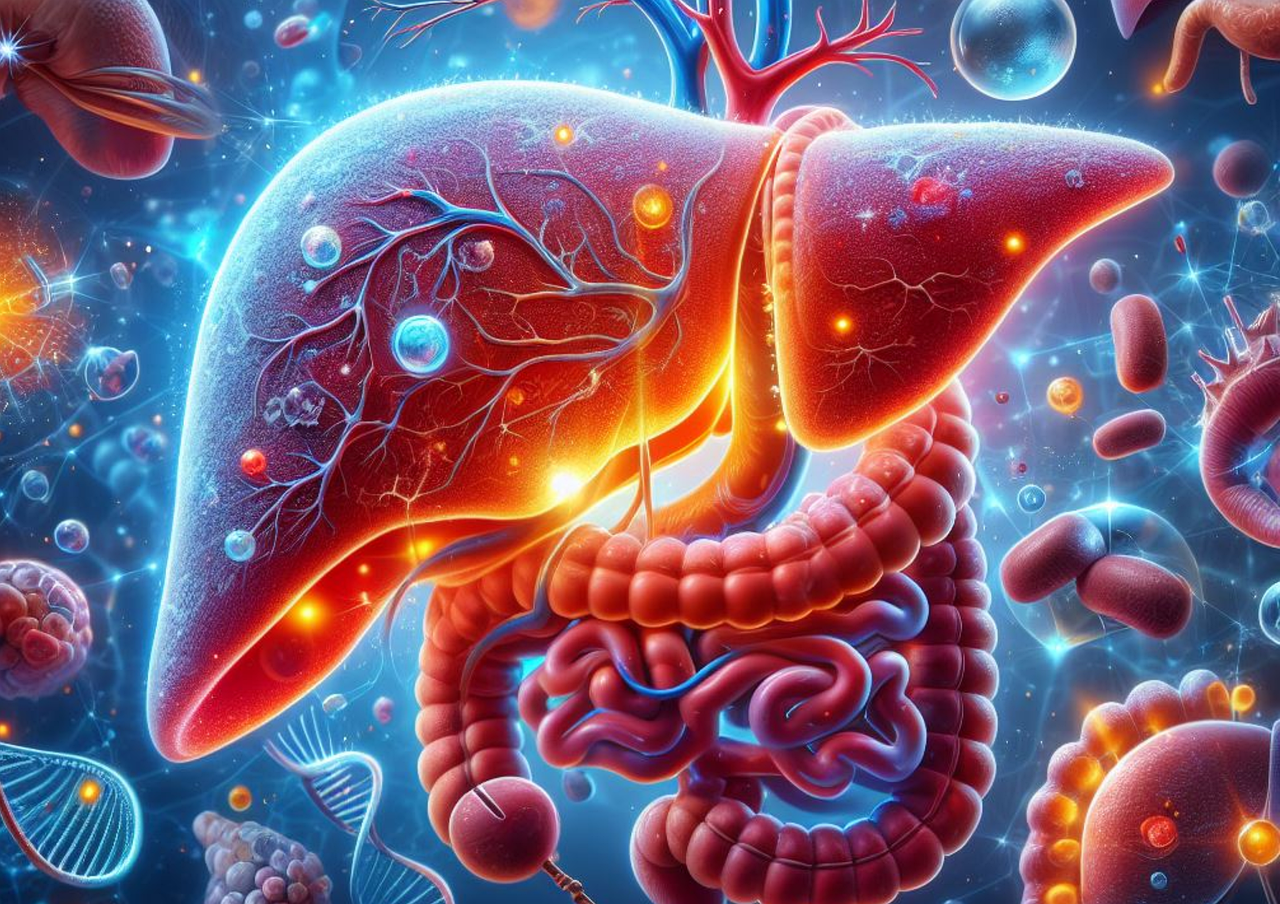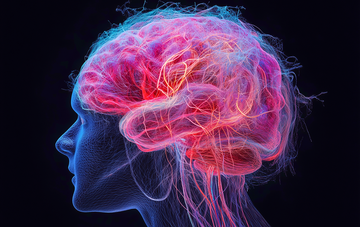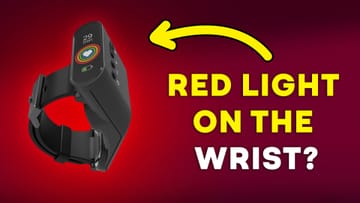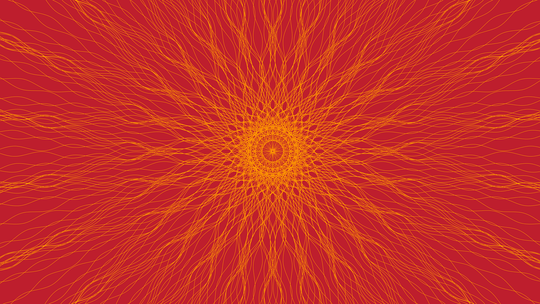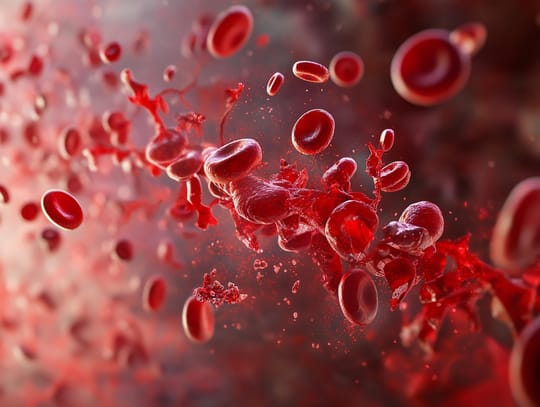"All health starts in the gut" has held some truth since the beginning of history. And yet, gut health is far more than just the digestion of your food. Once you've got problems there, tons of issues pop up, such as pain, cancelled plans because you may have diarrhea, unpredictability in your life, and increased risk of other health conditions.
Next, it's your energy levels that are affected if gut health issues persist long-term. Additionally, your mood, mental health, and overall well-being may suffer.
No bueno!
Gut health is critical. By fixing your gut health, you'll create a better future, not just for your health, but for your life's goals. Hence, today I'm exploring an essential topic: red light therapy for gut health.
The good thing is that in recent years, research on red light therapy for gut health hasn't just exploded. Many new devices for red light therapy for stomach and red light therapy for digestion have emerged. These devices often have slight differences. Additionally, many all-around red light therapy devices are also suitable for promoting gut health. So that's the topic covered in this article today.
As always, if you're short on time, just read the summary below. If you want to understand my whole argument, read the entire article!
Gut health plays a foundational role not only in health but also in well-being. Your brain health, immune function, skin, joints, and many other systems are all influenced by the health of your gut. Your gut contains trillions of microbes (some scientists even claim a 1:1 ratio to human cells) that all contribute to digestion and nutrient absorption.
Poor gut health contributes to inflammation, reduced nutrient absorption, and heightened risk of chronic diseases, including diabetes, cancer, and neurological conditions like Parkinson’s and Alzheimer’s. And, genetics, diet, environment, and lifestyle all affect gut health. So, my claim in this article isn't that light therapy alone will completely fix or improve poor gut health, but rather that it's a critical tool in the toolbox. I consider a few lifestyle factors in this article.
Recently, more studies on red light therapy for gut health have been published. Most of these studies are animal studies, but preliminary research is promising. Many of these studies focus not only on the gut but also on interactions with other organs, such as the gut-liver-immune axis and the gut-brain axis. The link between these organs often works both ways, so by influencing the brain, you could theoretically also affect the gut and vice versa.
Currently, the best evidence suggests improvements in gut inflammation, the microbiome, and the countering of leaky gut (a compromised barrier between the blood and gut). Often, animal studies have shown benefits for conditions such as Irritable Bowel Syndrome, diarrhea, gastritis, and constipation - I consider all of these cases in the full article.
As for devices, the Kineon HEAL+ and Cerathrive may currently offer some help. For a low-budget option, you may want to consider a tabletop panel or a handheld device, pressing it against the gut. For "bonus points" (better treatment!), you may want to treat the lower back and brain as well, due to nervous system interactions. The great news is that red light therapy represents a promising, low-risk tool for optimizing gut health, especially as more publications on the topic emerge!
If you need an introduction to what these terms mean, check the following resources:
- What Is Red Light Therapy?
- Red Light Therapy Explained: Basic Terms Guide
- Start Here - Light Therapy 101 & Buyers Guide
- Red Light Therapy Dosing Chart: The Raw Data From Hundreds Of Studies
- Red Light Therapy Dosing: Why It's Complicated!
- Red Light Therapy Wavelengths Benefits: The Ultimate Guide
- How Often Should You Use Red Light Therapy Explained
These resources should give you a basic understanding of how red light therapy works, and the discussions around it!
The image at the start of this article is AI-generated, though!
Gut Health Basics
"All health starts in the gut" is an ancient saying. And, there's some truth to it–although perhaps more recently people have started emphasizing "all health starts in the environment" with good reason too.
Well, I'll marry the two statements in this article! The environment, including light inputs (the light that shines on your body), has a substantial effect on your gut health in turn. So there's that...
Then there are the issues with nutrient uptake. Poor gut health leads to lower absorption of vitamins and minerals. Poor gut health leads to inflammation not only in the gut but also in the joints, skin, brain, and other areas!
But let's take a step back and consider a broader perspective on why gut health matters first. In recent years, the topic of gut health has gained significant popularity in the natural health and wellness sector. The gut microbiome, comprising the trillions of organisms living inside the body, has been a centerpiece of this (1). Current estimates are that you've got about a 1:1 ratio of human cells and non-human organisms inside you. And that microbiome is everywhere - in your mouth, on your skin, in your lungs, etc.
Next up, the gut microbiome then affects many other organ functions. There's a gut-brain axis, for instance, a gut-immune axis, a gut-liver-immune axis, and so forth!
So, gut health isn't really separate from the rest of your body. Breathing and air pollutants also affect gut health, for instance (2; 3). For optimal health, you'd better maintain a great gut microbiome! Here's what researchers say about that microbiome:
"The shaping and multiplication of gut microbiome starts at birth, while the modification of their composition depends mainly on various genetic, nutritional and environmental factors. The modification in the composition and function of the gut microbiota can change intestinal permeability, digestion and metabolism as well as immune responses. The pro inflammatory state caused by alternation of gut microbiota balance lead to the onset of many diseases ranging from gastrointestinal and metabolic conditions to immunological and neuropsychiatric diseases." (1)
Yes, you probably guessed that your nutritional intake has a huge effect on your gut microbiome. But, so does exercise (4; 5; 6; 7)! The same is true for shift work and disruptions of your so-called "circadian rhythm" (8; 9; 10). That circadian rhythm is the 24-7 day and night cycle of your body that mostly responds to light inputs into the eye.
(Check my article about sleep quality and light therapy for more info below:)

Ultimately, the bottom line is that gut health is a complex issue. Most of your lifestyle decisions will affect your gut health and microbiome. High psychological stress levels early in your life, or even when you're an adult? That stress directly affects your gut microbiome (11; 12; 13; 14)! And, likely, there are many links between behaviors that affect gut health that have not yet been discovered.
Now let's explore why that microbiome matters so much. Gut health isn't just an abstract idea–your overall disease risk is literally affected big time by your gut. Here's what researchers state:
"Virtually all our body sites are colonised by microbes suggesting different types of crosstalk with our organs. Because of the development of molecular tools and techniques (ie, metagenomic, metabolomic, lipidomic, metatranscriptomic), the complex interactions occurring between the host and the different microorganisms are progressively being deciphered. Nowadays, gut microbiota deviations are linked with many diseases including obesity, type 2 diabetes, hepatic steatosis, intestinal bowel diseases (IBDs) and several types of cancer. Thus, suggesting that various pathways involved in immunity, energy, lipid and glucose metabolism are affected." (15).
More recently, brain conditions such as Alzheimer's and Parkinson's disease have also been linked to gut problems (16; 17; 18; 19; 20; 21). The same is true for anxiety and depression (22; 23; 24).
I don't just want to spread doom and gloom, though! The good news?
You can influence many of these behaviors:
- Optimize your sleep quality by going to bed at a reasonable time and blocking blue light at night.
- Move throughout the day and avoid prolonged periods of sedentary behavior.
- Exercise intensely a few times per week.
- Eat regular food that's been prepared with single ingredients. So no junk food or hyperpalatable food!
- Minimize psychological stress.
- And, of course, apply light therapy correctly - we'll come back to that in a second!
So, my message is one of hope. You've got a much larger degree of control over your gut health than you ever had in history because you can control so many underlying factors!
The topic is complex, though. I do recommend finding a diet that works well for you personally (25; 26; 27; 28). I won't go into the full details here as it's a highly complex topic. However, for some individuals, improving gut health means eliminating lactose from milk. For others, it's removing grains or FODMAPs. Some may need a carnivore diet - at least temporarily until issues are fixed - while others may need to eat lots of vegetables.
The key here is to do what works. Often, you'll need to try and error, and sometimes you'll also need lab testing. Next up, let's explore some of the implications of gut health on other organ functions. First:
The Gut-Liver-Immune Axis: Why It Matters so Much
As stated before, there's also a gut-liver-immune axis - so a direct connection between your gut health, immune function, and liver function (29; 30, 31; 32; 33). Poor gut health is linked to alcoholic and non-alcoholic fatty liver disease, for instance, which are among the most common health conditions in the developed world!
Here's what researchers write about the gut-liver dynamic:
"The liver is anatomically and physiologically linked to the gut microbiota via enterohepatic circulation, specifically receiving intestine-derived blood through the portal vein. The gut microbiota is crucial for maintaining immune homeostasis of the gut-liver axis. A shift in gut microbiota composition can result in activation of the mucosal immune response causing homeostasis imbalance. This imbalance results in translocation of bacteria and migration of immune cells to the liver, which is related to inflammation-mediated liver injury and tumor progression" (29).
Here too, you can place that dynamic again in a broader perspective. Alcohol consumption and unhealthy fats, for instance, in the diet, worsen both your liver function and gut health, as well as their link (31). The communication is "bi-directional", so it goes both ways. This means that any action that negatively affects liver function can also compromise gut function (32). Additionally, the liver and gut have a direct influence on the immune function of the body (33).
So now your infection and autoimmune risk are directly affected by your gut! More recent evidence suggests a direct link between gut microbiome issues and an increased risk of autoimmune disease (34; 35; 36; 37).
Not good!
Next up, let's explore another vital piece of the puzzle:
The Importance Of The Gut-Brain Axis
The brain-gut axis is another bi-directional link, meaning that the brain influences your gut, and the gut (microbiome) influences your brain (38; 39; 40; 41). Most of this research is based on animal studies; however, the implications are incredibly profound (38).
What is very clear, however, is that the foods you eat and their compounds, such as fibers, probiotics, prebiotics, etc, strongly affect brain function (39). And by you influencing the brain, such as reversing your depression or anxiety, conditions such as inflammatory bowel disease may be impeded (40).
If you're curious, read my article on red light therapy for depression below:
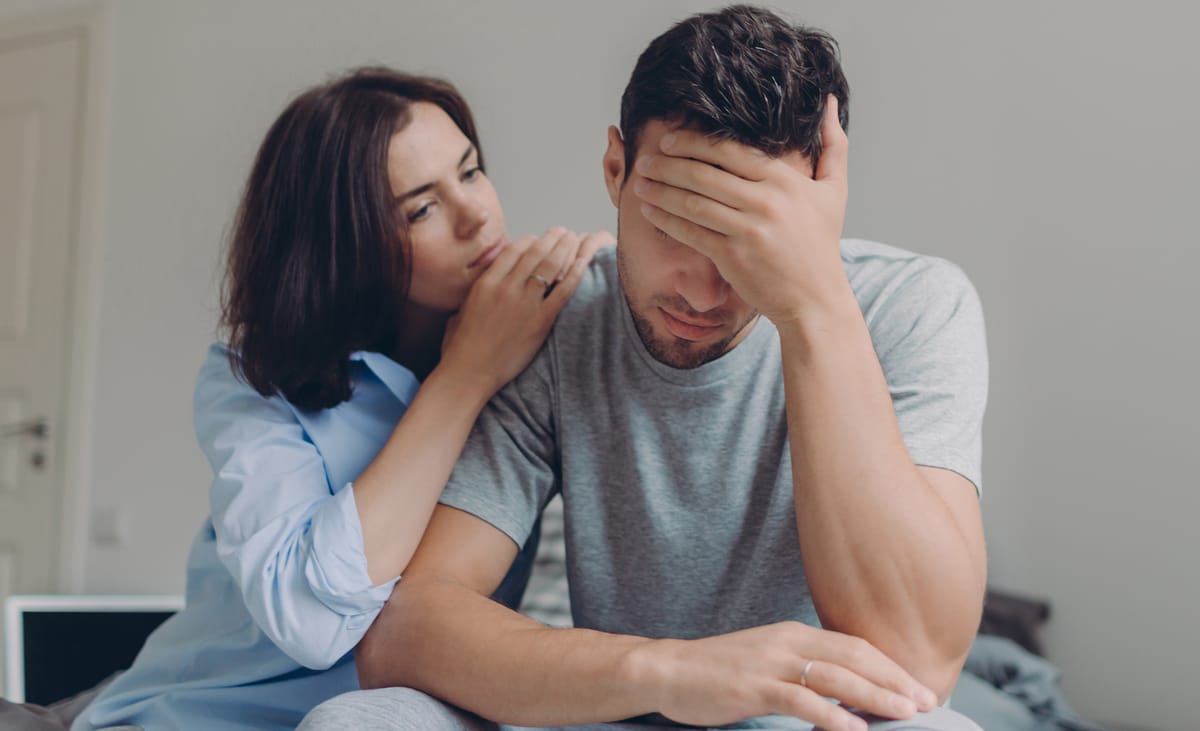
So, as stated earlier, the brain-gut axis matters because once you've got gut problems, your risk for neurodegenerative and autoimmune nervous system conditions goes up. Additionally, individuals with brain conditions are at a higher risk of poor gut function.
Ideally, you'd therefore influence both the brain and the gut, and that's where light therapy soon comes in. By affecting both the brain and gut with light therapy, both domains should improve more than when you're trying to influence either of them alone!
Curious?
Let's first look at red light therapy for gut health research directly:
How Red Light Therapy Interacts With The Gut
Very little is known about the direct mechanisms by which red light therapy affects gut function. Yes, we know about all of the traditional red light therapy mechanisms that you've read everywhere, such as:
- Boosting energy production by increasing "Adenosine Triphosphate" (ATP), which is generally accepted as the primary energy currency of the cell.
- Lowering inflammation and oxidative stress (both are bad in excess).
- Many secondary, tertiary and quartery effects, such as changing gene expression (what parts of the gene are activated or not), enhancing blood flow (through "Nitric Oxide" which plays a role in opening up your blood vessels), transcription factors (which can work for weeks and months after a single session), and more.
Below, however, I'll explore a few mechanisms that are unique for red light therapy for gut health. So, I'll consider how gut inflammation and the microbiome are affected directly, for instance, as well as leaky gut (a breakdown of the gut-blood barrier):
Gut Inflammation And The Role Of Red Light Therapy
Let's explore the link between red light therapy and gut inflammation first. That's the most primordial in a way, because it's a direct mechanism by which red light therapy affects many physiological functions.
The effect of red light therapy on inflammation, both local and systemic, has been well-documented for a long time (41; 42; 43). The key here is to understand that a proper inflammatory response, for instance, after an infection or an injury, is good. But chronically elevated inflammation levels are closely intertwined with almost any chronic disease (44; 45; 46; 47).
Lingering low-grade chronic inflammation is like termites slowly eating away at a wooden home.
Not good!
The great thing is that red light therapy powerfully lowers inflammation. And that decrease in inflammation is interwoven with improvements in energy production and lower levels of oxidative stress. Oxidative stress is a byproduct of energy production, but it is also elevated in aging and associated with many health conditions.
The good news is that animal studies have shown that red light therapy can lower gut inflammation. Here's what a recent review, which integrates earlier studies on a topic, states about that dynamic (48):
"The results showed that [red light therapy] has a significant positive effect in [Inflammatory Bowel Disease] studies in rats, with reduction of intestinal inflammation, improvement of mucosal integrity, and modulation of the immune response. However, no [human] studies were found necessary to obtain results and establish effective and safe treatment protocols." (48).
So, this research is still in its early stages. Other animal studies also show reductions in inflammation, such as:
- A rat study shows that 940 nm light reduces colitis, an inflammatory colon condition, with LEDs (49).
- A mice study shows that red light reduces overall gut inflammation (50).
- One more rat study shows reduction in inflammation with 660 nm light (51).
- Even fluorescent lighting (which has many different colors) can affect gut inflammation (52).
Yes, we do need human studies here. But it does seem likely that inflammatory processes are affected in the gut. I'd be surprised if these processes weren't directly affected, as the anti-chronic inflammation effect of red light therapy has been consistently shown to be effective across the board.
Next up, let's explore another important dynamic:
Red Light And The Microbiome: Does Light Influence Gut Bacteria?
One of the better-proven red light therapy on stomach benefits is that the microbiome is directly affected. Fortunately, human research is available here. I'll use Vladimir Heiskanen's Excel sheet specifically for this (53). Heiskanen has categorized more than 8,000 light therapy studies. You can find these studies yourself, such as all publications on gastroenterology (gut health, broadly speaking):

As may perhaps see in the picture above, there are multiple reviews published on the microbiome and red light therapy. More broadly speaking, a few of them are also on the oral-gut microbiome - the way your oral health affects your gut health and vice versa (54; 55; 56; 57).
If you're curious about oral health, consider my article on the topic below:

Now let's consider red light therapy for the gut microbiome, focusing on the review studies. These review studies integrate high-quality earlier research on a given topic (54; 55; 56; 57; 58).
The first key here is to understand that by treating your oral health with light therapy, indirectly, gut health will be affected too (54; 55; 57). And, in this domain, oral health is closely linked to brain health once again - so there's also an oral-brain axis! The effects on the oral microbiome are very strong, to be honest, as you can reduce the numbers of harmful bacteria often by 90-99%+,
(Hopefully, you'll see how many organ systems are closely intertwined!)
Next up, a review specifically considering light therapy's effects on the oral microbiome makes a claim that's pretty close to mine so far:
"Overall, the findings highlight that [red light therapy] modulates the gut microbiota, suggesting it could serve as a therapy for neurological conditions affecting the gut-brain axis. Future research should focus on further elucidating the molecular mechanisms underlying this therapy." (56)
Notice that the researchers state that the exact mechanisms aren't yet known, beyond the traditional mechanisms that I've already covered. Let's look at a few individual studies, though, not reviews, and check what they've found:
- Near-infrared light at 904 nm applied to the abdomen alters the microbiome in patients with Parkinson's disease (59).
- A study with one participant at 904 nm, 3 times weekly treatment for 11 weeks shows changes in the microbiome (60).
- Animal studies show similar outcomes (61).
So, here too, there are decent outcomes, although far more human research is needed to draw firm conclusions.
Next up:
Leaky Gut Syndrome: Can Red Light Help Strengthen The Barrier?
Leaky gut is when the gut-blood barrier isn't fully intact (62; 63; 63; 64). Toxic and harmful elements can then enter the bloodstream, thereby affecting the immune system and your overall health.
Here's an excellent summary of leaky gut syndrome's causes and potential effects:
"[F]actors such as stress, an unhealthy diet, excessive alcohol, antibiotics, and drug consumption can compromise the composition of the intestinal microbiota and the homeostasis of the intestinal barrier function of the intestine, leading to increased intestinal permeability. Intestinal hyperpermeability can allow the entry of harmful agents through the junctions of the intestinal epithelium, which pass into the bloodstream and affect various organs and systems. Thus, leaky gut syndrome and intestinal barrier dysfunction are associated with intestinal diseases, such as inflammatory bowel disease and irritable bowel syndrome, as well as extra-intestinal diseases, including heart diseases, obesity, type 1 diabetes mellitus, and celiac disease. " (62).
Not good at all! Once again, gastrointestinal problems are associated with various types of health conditions. The good news is that some animal studies do show better mucosal integrity, which means that the intestinal permeability decreases that underlie the leaky gut (65; 66). The research is still in its early phases, and no high-quality human studies are available.
So, a lot more research is needed for red light therapy and leaky gut. Would I recommend treatment? Sure, there's almost no risk of side effects and benefits are very plausible.
Do keep in mind that many people have been treating their abdominal area with red light therapy for many years now. There is thus unlimited upside and very little downside, but I do suggest you start slowly here.
Additionally, beyond the studies I've already cited, several companies possess extensive in-house data on red light therapy for digestion and gut health. Kineon is an example here, which developed a brain-gut axis product:
I really recommend watching that interview if you want some great insights into the topic!
Some Other Red Light Therapy For Digestion Applications
Below, I'll consider a few other red light therapy for digestion options that don't have much direct human evidence:
- Red light therapy for "IBS", or Irritable Bowel Syndrome - here, only two studies are available (67; 68). One study involved irradiating rats with 808 nm at different intensities, which resulted in fewer symptoms associated with irritable bowel syndrome (67). The second study is a review, where the researchers state the following:
"[Red light therapy] primarily targets mitochondrial function, enhancing adenosine triphosphate production, reducing oxidative stress, and promoting cellular repair and resilience. These effects collectively contribute to reduced inflammation, improved gut barrier integrity, and modulation of the neural and immune pathways relevant to IBS. Recent evidence suggests that PBM favorably influence the gut microbiome composition and function and reduce neuroinflammation, both considered key contributors to IBS symptomatology." (68)
- That review mostly looked at the underlying mechanisms that red light therapy can likely influence in IBS. Nevertheless, the mechanical links between red light therapy and IBS do look promising!
- Red light therapy for diarrhea has only one animal study that's nevertheless positive in outcome (69). Light therapy worked better than fiber (psyllium husk) in dogs, and reduced the symptoms and the number of diarrhea episodes. And, if you're wondering, "Can red light therapy cause diarrhea", the answer is that we don't know yet! Again, human studies are needed.
- Red light therapy for gastritis also has one animal (mice) study backing it (70). In gastritis, the stomach lining is inflamed. Here's the effect in rats that the researchers describe:
"In model control group, the secretion of gastric acid was little, pathologic morphological changes in gastric mucosa such as thinner mucous, atrophic glands, notable inflammatory infiltration were found. After 3.36 J/cm2 dose of He-Ne laser treatment for 20 d, the secretion of gastric acid was increased (P < 0.05), the thickness of gastric mucosa was significantly thicker than that in model control group (P < 0.01), the gastric mucosal inflammation cells were decreased (P < 0.05)." (70)
- Both the diarrhea and gastritis cases, as well as IBS, don't offer good evidence for recommending this therapy in humans yet,, though.
- Red light therapy for constipation is slightly different,, and does have human studies backing it (71; 72). The first study had children with chronic constipation, and they were treated with 630 nm laser light at acupuncture points at the abdomen, lower back, arms, and lower legs (71). This treatment led to a decrease in constipation. The second study used wavelengths of 660, 825, and 840 nm on the lumbar and sacral spine, which led to increased relaxation, potentially enhancing stool motility (72).
- Lastly, there's red light therapy for Crohn's disease. Currently, there is no direct evidence available here!
All good! In all of these cases, I'd like to see more high-quality human evidence.
Best Red Light Therapy For Gut Health Devices
I'll keep this short. I've already talked about the Kineon HEAL+ for the gut, that is paired with the CALM+ for more relaxation through the vagus nerve. That combination should affect gut health both through the brain and gut, paired in the gut-brain axis.
Then there's the CeraThrive, also aimed at the brain-gut axis. You can watch the review by Alex Fergus - the founder and owner of this website - below:
Arguably, however, the device is slightly underpowered for the brain. Thirdly, the easiest option by far is to simply use a tabletop panel. I recommend watching the following video if you want a budget tabletop panel - that panel can be held against the abdomen for treatment but isn't as easy to use as the HEAL+ above (that device isn't released yet!):
And, there are the premium tabletop panels as well that you may want to consider:
With these tabletop devices, I'd press them right against the abdomen and start treating yourself for a few minutes per day. A likely 2-3 minutes is enough to begin with. Later on, you start doing more. You can work up from there, but be sure to monitor your results! Doing more isn't always better, however, doing more can also often be worth it. So the process is all about trial and error!
For better results, treat the lower back as well. And, as always, you may also target the brain. Check my article on red light therapy for brain health if you want to know more about that topic!
Conclusion: Light Therapy Contributes To The Perfect Gut Health Journey!
Yes, light therapy is a wonderful development for gut health. And yet, far more human research is needed to draw firm conclusions. So, for now, much of the light therapy treatment protocols for gut health are a bit trial and error before superior alternatives are established in the literature.
Let's see what the future brings! I'm at least super excited because specialized light therapy for gut health devices are now coming out for the very first time. And as a consumer, you've got more options than ever to target your gut!
Frequently Asked Questions
Finally, I consider a few frequently asked questions below:
Does Red Light Therapy Reach The Gut?
Yes, very likely red light therapy reaches the gut. We do need more human research but studies such as in Parkinson's right now show extremely promising results!
Can Red Light Therapy Influence Digestion?
Yes, at several different levels, red light therapy influences digestion. Examples are the typical improvements in inflammation levels and energy, but also changes in the microbiome and gut permeability.
Is Red Light Therapy Safe For People With IBS, IBD or SIBO?
Light therapy is very likely safe for people with irritable bowel syndrome, inflammatory bowel disease, or small intestine bacterial overgrowth, yes. But, to have 100% certainty, we still need confirmation by high-quality studies with sufficient numbers of human participants that have these conditions. Likely, in the next few years, that research will emerge given the promising results in current gut health studies.
How Long Does It Take To See Red Light Therapy's Gut Health Benefits?
You should be able to see results after a few sessions at the earliest. And, at the latest, you may need to have several weekly sessions for a few months on end.
Is Red Light Therapy Effective For Stomach Pain?
The answer here is likely "yes" but we'll need direct human studies to confirm that effect to be 100% sure.
This is a post by Bart Wolbers of Light Therapy Insiders. Bart finished degrees in Physical Therapy (B), Philosophy (BA and MA), Philosophy of Science and Technology (MS - with distinction), and Clinical Health Science (MS), has had training in functional medicine, and is currently chief science writer.
Found This Interesting? Then You Might Like:
- Discount Codes, Deals & Recommendations - Red Light Therapy
- 36 Powerful Red Light Therapy Benefits
- Is Red Light Therapy Science-Based? An Introduction
- Red Light Therapy For Upgrading Your Brain Health
- Red Light Therapy For Depression: A Potential Solution
- Red Light Therapy For Weight Loss: The Science Of Supercharging Fat Loss
- HigherDOSE Sauna Blanket Review: Game-Changing Budget Home Sauna?

